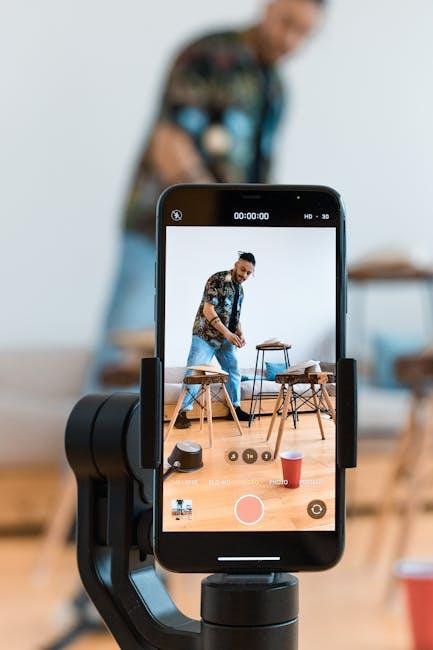In an increasingly digital world, the way users access content is evolving. With mobile devices soaring in popularity, the need for websites too cater effectively to both mobile and desktop users has never been more critical. Yet, as businesses race to optimize their digital presence, many find themselves facing a pervasive content gap between these two platforms. In this article, we’ll delve into the intricacies of addressing this disparity through the lens of technical SEO. By exploring actionable tips and best practices, we aim to equip you with the tools necessary to ensure that your content is not only visible but equally engaging, nonetheless of the screen size. Join us as we bridge the gap and create a seamless experience for all users.
Understanding the Mobile/desktop content Discrepancy
When examining the differences between mobile and desktop content,it’s essential to recognize that user behavior varies substantially across devices. Users on mobile tend to seek quick, accessible information, which necessitates content that is concise and direct.In contrast, desktop users often engage in more in-depth browsing sessions, allowing for content that can be slightly more thorough. To bridge this gap, prioritize responsive design and adaptive content strategies. This includes ensuring that images are optimized for different screen sizes and that navigation is streamlined for on-the-go users.
Implementing a strategy to address these discrepancies might also involve catering to various user intents through content segmentation. Consider creating components that are tailored specifically for mobile audiences, such as:
- Shortened articles: Focus on key points instead of lengthy texts.
- Quick loading times: Optimize page speed to enhance user experience.
- Mobile-friendly layouts: Use collapsible sections or accordions to condense content.
Additionally, conducting A/B testing can provide insights into what variations of content perform best on each device type. By evaluating engagement metrics and user feedback, you can refine your material to ensure a cohesive experience across platforms.

Optimizing Responsive Design for Improved User Experience
To effectively bridge the gap between mobile and desktop users, its crucial to ensure that your website offers a seamless experience across all devices. Start by implementing fluid grids and flexible images that adapt and resize according to the user’s screen size. This allows content to be displayed optimally, regardless of whether users are on a smartphone, tablet, or desktop. Additionally, consider using media queries to apply different styles and layouts based on the characteristics of the device, enhancing readability and usability.
Another vital aspect is to prioritize page loading speed, as slower websites can lead to high bounce rates, especially on mobile. Optimize images by compressing them without compromising quality and implementing lazy loading to boost performance. Moreover, remember to test your design’s responsiveness using tools like Google’s Mobile-Friendly Test to identify any issues. You can also keep your navigation intuitive by using hamburger menus or dropdown features on smaller screens to avoid clutter and improve user engagement.
| Element | Description | Impact on UX |
|---|---|---|
| Fluid Grids | Allows layout to adjust based on the screen size. | Enhances accessibility and readability. |
| Media Queries | Enables different styles for various devices. | Improves aesthetic appeal and functionality. |
| Page Speed Optimization | reduces loading times through image optimization. | Decreases bounce rates, boosting engagement. |

Leveraging Structured Data to Bridge the Content Divide
Structured data is a powerful tool that can significantly enhance the visibility of content across different devices. By implementing schema markup, webmasters can provide search engines with precise information about page content, which can lead to rich results. This means that on mobile devices, where screen space is limited, structured data can help highlight essential features, such as product information, reviews, and local business details, directly in the search results. This not only improves the user experience but also increases the chances of clicks, effectively narrowing the content gap between mobile and desktop users.
To maximize the impact of structured data, consider the following strategies:
- Consistent Markup: Ensure that structured data is uniformly applied across all versions of your website.
- Mobile-Specific Attributes: utilize markup that is beneficial for mobile users, like BreadcrumbList for navigation.
- Regular Testing: Use tools like Google’s Rich Results Test to verify the correctness of your structured data.
By keeping structured data up to date and relevant to user intent, you can create a seamless experience that meets the diverse needs of your audience. Below is a simple table highlighting some common types of structured data implementations:
| Type of Structured Data | Ideal Use Case |
|---|---|
| Product | For e-commerce sites to display pricing and availability. |
| Article | To enhance blog posts with featured images and publication dates. |
| FAQ | to answer common questions directly in the search results. |

Monitoring Performance metrics for Continuous Improvement
In the ever-evolving landscape of digital marketing, assessing how well your content performs across different platforms is crucial to refining your strategy. Key performance metrics to monitor include mobile traffic versus desktop traffic, bounce rates, and user engagement levels. by examining these metrics,you can identify patterns that reveal where gaps exist in user experience between devices. For example,a high bounce rate on mobile might indicate that your site is not optimized for smaller screens,while a significant drop in engagement on desktop could suggest that your content does not meet the expectations of users on larger displays. Consistently reviewing these vital stats allows for pinpointing which technical SEO elements require attention, leading to targeted tweaks that enhance user satisfaction.
To facilitate better ongoing analysis, consider implementing the following strategies to track your performance metrics effectively:
- Utilize Google Analytics: Set up separate views for mobile and desktop traffic to easily compare performance.
- Set Up Goals: Define clear user actions (like form submissions) that you want to track for both platforms.
- Leverage Heatmaps: Tools like Hotjar or Crazy Egg can visually show where users click and scroll, highlighting areas of interest or confusion.
| Metric | Mobile | desktop |
|---|---|---|
| Bounce Rate | 65% | 45% |
| Average Session Duration | 1:20 min | 3:00 min |
| Page Views per Session | 2.3 | 4.5 |
Taking stock of the identified gaps with these metrics can guide your continuous improvement efforts. By addressing the technical issues, such as page load times and responsiveness, you can create a seamless experience across both mobile and desktop platforms. Regular audits of your content aimed at improving SEO performance will ensure you keep pace with user expectations and remain competitive in your niche.
Future Outlook
bridging the mobile/desktop content gap is not just a technical necessity—it’s an opportunity to engage users across all platforms seamlessly. By implementing the SEO strategies outlined in this article, you can enhance user experience, improve site performance, and ultimately drive higher traffic and conversions. as the digital landscape continues to evolve, staying ahead of the curve in technical SEO practices is vital for ensuring your content is accessible and relevant, regardless of how it’s accessed. Embrace these changes, and your website will not only adapt but thrive in this multi-device world. Remember, the smoother the experience you provide, the stronger the connection you build with your audience. Happy optimizing!



